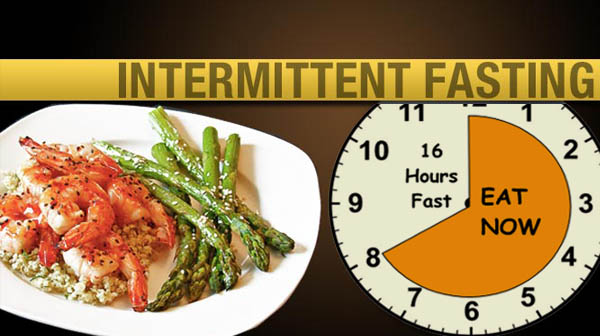Intermittent fasting includes totally or incompletely declining eating for a set measure of time, before eating routinely once more. A few examinations propose that along these lines of eating may offer advantages, for example, weight loss, better health, and expanded life span. Proponents guarantee that an intermittent fasting program is simpler to keep up than customary, calorie-controlled weight control plans.
Every individual’s understanding of intermittent fasting is individual, and diverse styles will suit distinctive individuals. There is a wide range of methods for intermittent fasting. The strategies change in the number of quick days and the calorie stipends.
What Is Intermittent Fasting?
Intermittent fasting is a sort of eating routine that is quickly developing in prevalence and turning into the best approach to shed pounds. As you may have figured from its name, Intermittent fasting is an eating routine arrangement where you quick for a set timeframe amid the day. This is normally between 16-20 sequential hours. You eat amid the other 4-8 long periods of the day.
While fasting you can also eat and drink low calorie or without calorie foods. Think espresso, tea, water, and vegetables. The additional time you spend fasting each day, the better your outcomes. You can do these fasts as regularly as you like. Once more, the more regularly you do as such, the better.
How Intermittent Fasting Works
Following this eating routine arrangement is super straightforward. You should simply pick a timeframe amid the day that you will quick. This ought to be between 16-20 hours. Try not to stress over checking calories or sugars. Simply center around approaching your day until it’s a great opportunity to eat.
It’s best to pick a set timeframe to direct you’re quick. I jump at the chance to quick from 8 o’clock during the evening to 4 the next evening. I’ll at that point have my first dinner of the day and a bite or two a couple of hours after the fact. When 8 o’clock moves around, it has returned to fasting.
You don’t need to quick consistently before all else either. You might be more open to breaking in gradually with 2-3 fasts per week at first. Include extra long periods of Intermittent fasting as you turn out to be more OK with this style of eating.
Intermittent Fasting can likewise help in light of the fact that your body works diversely when “feasting” contrasted with when “fasting”:
When you eat a feast, your body spends a couple of hours preparing that food, consuming what it can from what you just devoured. Since it has the majority of this promptly accessible, simple to consume vitality, your body will utilize that as vitality as opposed to the fat you have put away. This is particularly valid in the event that you just expended starches/sugar, as your body likes to consume sugar as vitality before some other source.
Amid the “fasted state” (the hours in which your body isn’t devouring or processing any food) your body doesn’t have an as of late expended supper to use as vitality, so it will probably pull from the fat put away in your body as it’s the main vitality source promptly accessible.
The same goes for working out in a “fasted” state. Without a prepared supply of glucose and glycogen to pull from (which has been exhausted through the span of your fasted state, and hasn’t yet been recharged with a pre-exercise dinner), your body is compelled to adjust and pull from the main wellspring of vitality accessible to it: the fat put away in your phones.
For What Reason Does this Work?
Our bodies respond to energy consumption with insulin creation. The more delicate your body is to insulin, the more probable you’ll be to utilize the sustenance you expend effectively, and your body is most touchy to insulin following a time of fasting.
These progressions to insulin generation and affectability can assist lead with weighting loss [2] and muscle creation. Amid that period, the food you expended will be utilized in a couple of courses: changed over to glycogen and put away in your muscles or consumed as vitality promptly to help with the recuperation procedure, with insignificant sums put away as fat.
Tips To Make Intermittent Fasting Easier
Limit foods rich in processed carbohydrates and sugars
While intermittent fasting makes it conceivable to eat somewhat looser than ordinary, you should even now eat as meager bread, pasta, rice, and so on as would be prudent. Focus rather on eating protein from hamburger, fish, or pork, sugars from vegetables, organic product, and sweet potatoes, and solid fats from nourishments like almonds, avocados, fish, and olive oil.
Tally your calories
Making the most of each calorie. On the off chance that the picked plan permits a few calories amid fasting periods, select supplement thick nourishments that are wealthy in protein, fiber, and invigorating fats. Models incorporate beans, lentils, eggs, fish, nuts, and avocado.
Amid your fasting, you’ll need to drink a lot of water
Press a little lemon or lime juice into your water to help dispose of any desires you encounter. You can likewise drink espresso, tea, or other calorie free refreshments. Following fourteen days you will locate that intermittent fasting shields you from needing sugar altogether.
Stay away from cold drinks and sodas
One sort of calorie free beverage that ought to be stayed away from are soft drinks and different refreshments that utilization counterfeit sweeteners. Studies demonstrate that the can really invigorate your craving like a beverage that contains sugar and cause you to indulge.
In the event that you can deal with it, take in a little caffeine toward the beginning of the day and early evening
The caffeine in espresso and tea may really make Intermittent fasting somewhat less demanding to quick since it’s useful for checking your hunger. Be mindful so as not to enjoy as this may prompt you feeling excessively wired.


